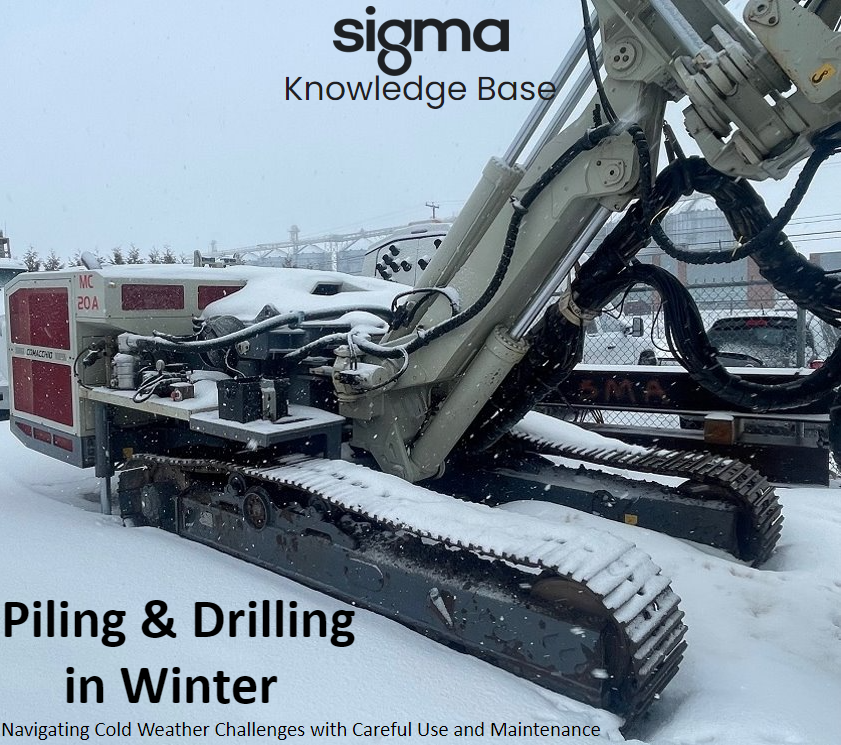
Introduction:
As the winter season blankets construction sites with snow and chilly temperatures, the challenges faced by heavy machinery, including piling & drilling rigs, become more apparent. Piling & drilling rigs play a crucial role in providing foundational support for structures, and their efficient operation is paramount for project success. In this blog post, we'll explore the considerations for using and maintaining piling & drilling rigs during cold weather, ensuring both worker safety and optimal machine performance.
1. Temperature-Resistant Fluids:
Cold weather can impact the viscosity of hydraulic fluids, affecting the performance of piling & drilling rigs. To counter this, it's essential to use temperature-resistant hydraulic fluids that can maintain their properties in low temperatures. Regular checks and, if necessary, replacement of fluids should be part of the winter maintenance routine.
2. Preheating Equipment:
Before initiating piling operations, consider preheating critical components of the piling rig. This precautionary measure helps prevent issues related to cold starts, reducing stress on the machine and promoting smoother functionality. Pay particular attention to the engine, hydraulic system, and drilling equipment.
3. Insulation and Heating Systems:
Installing insulation on exposed components of the piling rig can help retain heat and protect against freezing. Additionally, incorporating heating systems for key parts, such as the engine and hydraulic reservoir, ensures that critical components operate within optimal temperature ranges, preventing potential damage.
4. Snow and Ice Management:
Snow and ice accumulation on the rig pose safety risks and can hinder its functionality. Regularly remove snow from working parts and walking surfaces to maintain a safe working environment. Utilize de-icing agents as needed to prevent ice buildup on critical components.
5. Equipment Lubrication:
Proper lubrication is crucial for the smooth operation of piling & drilling rigs. Cold weather may cause lubricants to thicken, impacting their effectiveness. Choose lubricants with low-temperature specifications and adhere to a consistent lubrication schedule to prevent wear and tear on moving parts.
6. Battery Maintenance:
Cold weather can significantly affect battery performance. Ensure that the piling rig's battery is in top condition by checking its charge and connections regularly. Consider using cold-weather-rated batteries and provide a warm storage space for spare batteries to maintain their efficiency.
7. Operator Training:
Educate operators on the specific challenges posed by cold weather and the corresponding operational adjustments. Emphasize the importance of monitoring equipment conditions, recognizing early signs of issues, and promptly reporting any concerns for timely intervention.
Conclusion:
While winter weather may present additional challenges for the use and maintenance of piling & drilling rigs, a proactive approach can mitigate risks and ensure the longevity of the equipment. By implementing temperature-appropriate fluids, preheating components, employing insulation, managing snow and ice, prioritizing lubrication, maintaining batteries, and providing adequate operator training, construction teams can navigate cold weather conditions effectively. This comprehensive approach not only safeguards equipment but also promotes a safer and more efficient working environment during the winter months.
Do you have a project coming up in 2024? To view our full range of Piling & Drilling Machines that we currently have available click the button below!
Contact us!
T: +44 (0) 1642 206100
E: sales@sigmaplantfinder.com
Disclaimer: This blog post contains content generated by an artificial intelligence (AI) model. While we have made efforts to ensure the accuracy and quality of the information provided, it is important to note that AI-generated content may not always be error-free or fully aligned with current standards, regulations, or the latest research. We recommend using this information as a starting point for your research and analysis, but we strongly encourage you to verify the facts, consult experts, and cross-reference the content with trusted sources before making any decisions or drawing conclusions based on the information presented in this blog post. The views and opinions expressed in this content are not necessarily those of the blog's author or publisher, and we cannot be held responsible for any consequences that may arise from its use.
